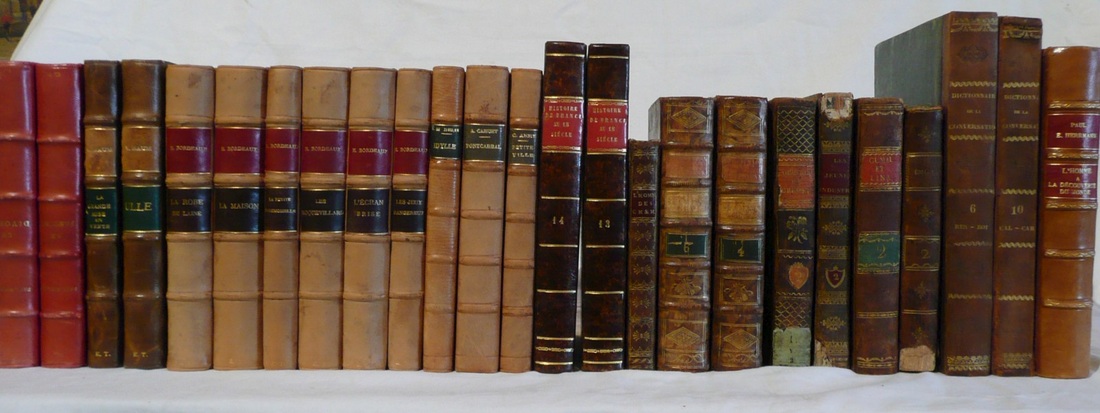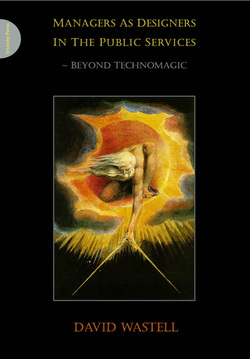Technomagic
Writing about the ICS (the Integrated Children's System - an attempt to redesign the entire statutory child welfare system in the UK, using Information Technology to achieve this transformation), David Wastell develops the notion of 'technomagic' - an unreasoning belief in the capacity of information technology to improve complex situations. He starts with a quote from Malinowski: "The transporting of the log is not an easy task… the natives resort to a magical rite which makes the canoe lighter. The builder beats the log with a bunch of dry lalang grass and utters the following spell: “Come down, rot! Come down fungus…” invoking a number of deteriorations to leave the log… the heaviness and slowness due to all these magical causes are thrown out of the log." Wastell then continues: "I have noted that a common failing of managers is to see technology as a magic bullet. I will develop this point here in relation to the ICS, before going on to proffer my remedy for such a magical attitude. Although seeming opposites, technology and magic have formally much in common, as sociologists from Mauss (writing at the turn of the century) to Stivers have noted. Both are instrumental, involving the deployment of a body of practical skill and knowledge to accomplish something of social value. The difference lies in the link between cause and effect. Whereas magic produces its effects entirely through performance, as illustrated by the so-called ‘primitive’ rituals of the Melanesian canoe-builders, technology accomplishes its results through direct, physical causes. Or does it? In the case of machines, such as the steam engine, yes – there is nothing magical here about cause and effect (at least to us ‘moderns’!). But the metaphor of the steam engine is not a good one for so many of the technical systems of today’s world. The implementation of IT will in itself not guarantee the desired outcome, however devoutly such a consummation is wished. The computer may be a machine, but the work system in which it is embedded is emphatically not, as we have seen a fortiori with the ICS. In this second digression, I shall argue that our faith in the instrumental efficacy of technology in an increasingly complex and technologically-mediated world would seem to have much more in common with the ritualised magic of the canoe-builder beating the log with a bunch of dry lalang grass than we would like to think. The difference is only that we try to change the world by writing a software program or a policy document which embodies a normative idealisation of how the world should be. If magic reflects the belief that the observance of certain rites, the muttering of incantations, the avoidance of taboos and so forth, will in and of itself produce desired effects, then magic is very much a feature of the mindset of the modern world, especially the world of public policy and of business. We may not be so modern after all! The sociology of magic To assist in our task, let us commence with a theoretical excursion, summarising magic’s key elements from Mauss’s seminal treatise on magic, first published in 1902. For Mauss, magic is first and foremost a social phenomenon. Magic needs believers! Magicians in all societies are creatures of public opinion; their power is not an intrinsic potency, but is socially constructed by a credulous community in order to accomplish those ‘outcomes’ that the society seeks, bringing rain, curing illness, ensuring protection and safety. In crude terms, the magical way of problem-solving is to identify a magician with the power to solve the problems, hand over control, participate in the magical methodology, and “hey presto”! Mauss stresses that magic in any era is always practical[1], aimed at the achievement of change; it happens in special places, marked off physically and socially, and psychologically too (demonic possession, catalepsy, etc.). The mechanical observance of rites, both non-verbal and verbal, is fundamental, as is the role of representations (e.g. effigies, arcane diagrams, etc.) which may be abstract or concrete. Verbal rites include spells and incantations, aimed at summoning up the required supernatural forces, to achieve the desired effect. All is carefully prescribed. Mere performance of the routine is sufficient, as shown by the formulaic nature of the rites; incantations can be quite inaudible and unintelligible: enactment is all. “Between a wish and its fulfilment, in magic, there is no gap.” Magical causality works by the transfer of properties via “secret sympathy… the impulse being transmitted from one to the other by what we may conceive of as an invisible ether” (Frazer). Any association of ideas would appear to suffice, even apparent opposites will do, e.g. the use by the Cherokee Indians of a yellow root to cure jaundice. This sympathy can be imitative (the law of similarity), e.g. symbolically enacting a cure effects that cure. Alternatively, the nexus may be contagious (the law of contact), exemplified by the widespread superstition that harm may be done to an individual through damaging any severed element of that person (hair, nails etc.). A key characteristic of magic is its incorrigible nature and the unreflective behaviour of its adherents: Magic has such authority that a contrary experience does not destroy a person’s belief. Even the most unfavourable facts can be turned to magic’s advantage, since they can always be held to result from an error in performance of the ritual…. Fortuitous coincidences are accepted as normal facts and all contradictory evidence is denied (Mauss) References: James George Frazer Bronislaw Malinowski Marcel Mauss David Wastell - Managers as Designers in the Public Services |
Explore |


